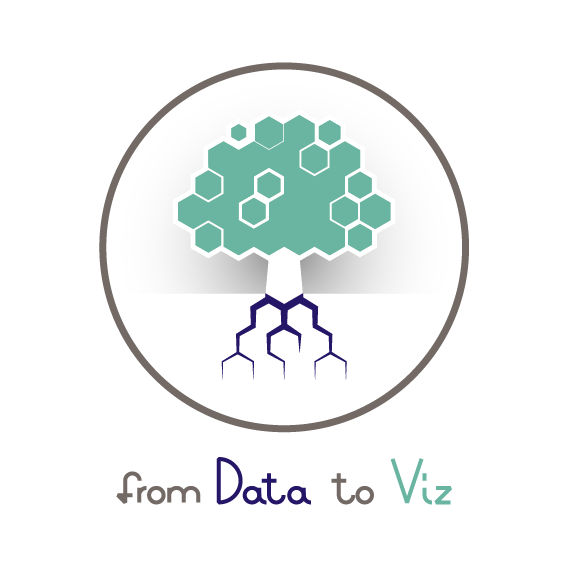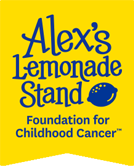Resources
Useful links, etc
Featured
 Charles Darwin And The Terrible, Horrible, No Good, Very Bad Day
Charles Darwin And The Terrible, Horrible, No Good, Very Bad DayI guess everybody, even the smartest people who ever lived, have days when they feel dumb — really, really dumb. Oct. 1, 1861, was that kind of day for Charles Darwin.
 Data To Viz
Data To VizFrom Data to Viz leads you to the most appropriate graph for your data. It links to the code to build it and lists common caveats you should avoid.
More
 Seven year postdoc
Seven year postdocThe Awesomest 7-Year Postdoc or: How I Learned to Stop Worrying and Love the Tenure-Track Faculty Life
 Good enough practices in scientific computing
Good enough practices in scientific computingThis paper presents a set of good computing practices that every researcher can adopt, regardless of their current level of computational skill.
 The Missing Semester of Your CS Education
The Missing Semester of Your CS EducationLearning the command line, data management, and other important CS skills that you may not have learned yet.
 Manuscript writing advice
Manuscript writing adviceHow small changes to a paper can help to smooth the review process.
 Designing an award-winning poster
Designing an award-winning posterBlog post describing good poster design principles.
 Introduction to statistics (original R version)
Introduction to statistics (original R version)A introductory book to statistical analysis using R.
 Introduction to statistics (python version)
Introduction to statistics (python version)A introductory book to statistical analysis using Python.
 Alex's Lemonade Stand Training Modules
Alex's Lemonade Stand Training ModulesThis repository is a collection of modules that are combined into 1-5 day workshops on computational topics for the childhood cancer research community.
 Bash tutorials
Bash tutorialsAn introduction to bash scripting.
 Fundamentals of Data Viz
Fundamentals of Data VizA textbook and accompanying codebase on data visualization.
 Data Carpentry Genomics Workshop
Data Carpentry Genomics WorkshopThis workshop teaches data management and analysis for genomics research.
 Statistical vignette of the day
Statistical vignette of the dayInteresting statistical anomalies and correlations.
 Silhouette images
Silhouette imagesFree silhouette images of animals, plants, etc.
 Gender bias calculator
Gender bias calculatorTool for identifying gendered language in job ads and letters of ref.
 R EasyStats
R EasyStatsA collection of R packages for easy statistics and models.
 What they forgot to teach you about R
What they forgot to teach you about RThis book focuses on content intrinsically related to the infrastructure surrounding data analysis in R, but does not delve into the data analysis itself.
 DIY.transcriptomics
DIY.transcriptomicsBest practices for the analysis of high-throughput sequencing data from gene expression (RNA-seq) studies.
 Ten simple rules for attending your first conference
Ten simple rules for attending your first conferenceTen simple rules for attending your first conference.
 The Elements of Statistical Learning
The Elements of Statistical LearningRecommended textbook on data mining, statistics, and predictive modeling.
 CCDL Workshop Materials
CCDL Workshop MaterialsWorkshop materials from the Childhood Cancer Data Lab.
 The Science of Scientific Writing
The Science of Scientific WritingA guide to revising/improving your scientific writing.
 How to read a scientific article
How to read a scientific articleEfficient Reading of Papers in Science and Technology.
 Current Topics in Bioinformatics workshops
Current Topics in Bioinformatics workshopsTutorials by the Harvard Chang bioinformatics core.
 Posit R snippets
Posit R snippetsA collection of R code snippets and instructions featuring up-to-date best practices for coding in R
Enabling scientists to understand and analyze their own experimental data by providing instruction and training in bioinformatics software, databases, analyses techniques, and emerging technologies.
 Ten simple rules for structuring papers
Ten simple rules for structuring papersA short guide to writing scientific papers.
A quick, concentrated guides for mastering some of the professional challenges research scientists face in their careers.
 Nature Summary Paragraph
Nature Summary ParagraphAn annotated summary paragraph provided by Nature.
 Nature English Communication for Scientists
Nature English Communication for ScientistsNature guide to writing.
 NIH Clear Language Guide
NIH Clear Language GuideThis website consists of five sections and a checklist you can print. In each section, you will find a number of cards you can flip through to learn about using plain language in your work. When you are done with the final section, you can print a certificate of completion.
 Nature summary paragraph
Nature summary paragraphColor-coded example of how to write an abstract.
 How to schedule a committee meeting
How to schedule a committee meetingClaus Wilke’s guide to getting 5 faculty into a room at the same time to listen to your annual research update.
 Latex equation editor
Latex equation editorFor when you really need a high quality image of your latex equation and don’t want to screenshot it.
 Latex symbol finder
Latex symbol finderWhen you can’t remember what the latex name is for a symbol, detexify has your back. It lets you draw the symbol and will show close matches.
 Latex table generator
Latex table generatorAn easy way to create beautiful latex tables.
 NIAID BioArt repository
NIAID BioArt repositoryBuild figures, presentations, and illustrations with 2,000+ science and medical art visuals. This collection of high-quality, scientifically accurate vectors, icons, and brushes is freely available within the public domain.
 Friends Don't Let Friends Make Bad Graphs
Friends Don't Let Friends Make Bad GraphsChenxin Li’s guide to data visualization. Friends don’t let friends make certain types of data visualization - What are they and why are they bad.
 Visualization Workshop Slides
Visualization Workshop SlidesSlides from Dan Larremore and Sam Way’s workshop on data visualization.
Tips and cheatsheets by and for MatPlotLib.
 ColorHunt Palette Guide
ColorHunt Palette GuideA whole lot of color palettes.
 Scientific Writing Made Easy
Scientific Writing Made EasyA step-by-step guide to writing a scientific manuscript.
 Monte Carlo simulations explained
Monte Carlo simulations explainedA crash course on how to do Monte Carlo simulations and the basics of running code on a cluster.
 R for Data Science
R for Data ScienceIntroduction to R coding for data science applications.
 How to read a paper
How to read a paperA 3 pass approach to reading journal articles.
 UF Graduate School Planning Resources
UF Graduate School Planning ResourcesIDP, roadmap, and other resources for UF graduate students.
 Google Machine Learning Education
Google Machine Learning EducationLearn to build ML products with Google’s Machine Learning Courses.
 Statistical test flowchart
Statistical test flowchartA flowchart to help select which statistical should be used in a variety of common scenarios.
 scRNA Best Practices Python
scRNA Best Practices PythonThis book aims to guide both beginners and experienced professionals in best practices of single-cell sequencing analysis.
 scRNA Best Practices Bioconductor
scRNA Best Practices BioconductorThis book will show you how to make use of cutting-edge Bioconductor tools to process, analyze, visualize, and explore scRNA-seq data.
 scRNA Best Practices Bioconductor
scRNA Best Practices BioconductorTutorials from the 2025 epigenomics workshop.
